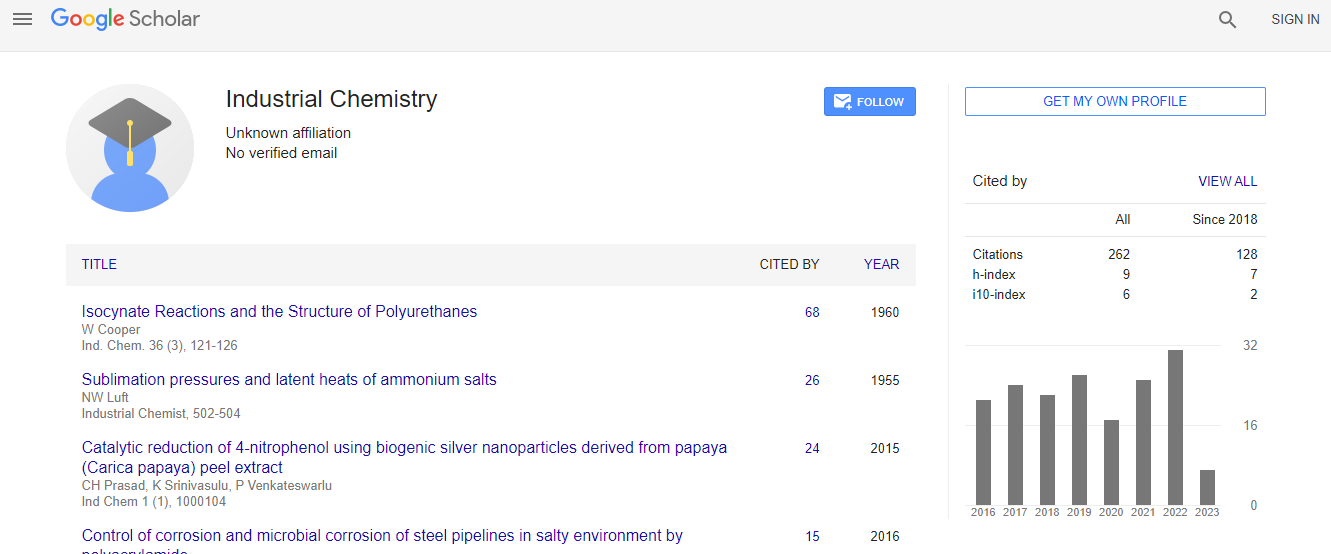Our Group organises 3000+ Global Conferenceseries Events every year across USA, Europe & Asia with support from 1000 more scientific Societies and Publishes 700+ Open Access Journals which contains over 50000 eminent personalities, reputed scientists as editorial board members.
Open Access Journals gaining more Readers and Citations
700 Journals and 15,000,000 Readers Each Journal is getting 25,000+ Readers
Google Scholar citation report
Citations : 262
Industrial Chemistry received 262 citations as per Google Scholar report
Indexed In
- Index Copernicus
- Google Scholar
- RefSeek
- Directory of Research Journal Indexing (DRJI)
- Hamdard University
- EBSCO A-Z
- OCLC- WorldCat
- Scholarsteer
- Geneva Foundation for Medical Education and Research
- Euro Pub
Useful Links
Recommended Journals
Related Subjects
Share This Page
Application of Chlorella vulgaris to wastewater for reuse
17th International Conference on Industrial Chemistry and Water Treatment
Celeste Solis Martinez, Fernando Hernandez Aldana, Jose Victor Rosendo Tamariz, Jose Antonio Rivera Tapia and Ernesto Mangas Ramirez
Benemerita Autonomous University of Puebla, Mexico
Posters & Accepted Abstracts: Ind Chem
Abstract
The accelerated growth of the population worldwide has led localities to a greater consumption of natural resources. Overpopulation also requires quality improvement. Industrialization, urbanization and daily consumption have limited the availability of water in many parts of the world, so in some populations, it is necessary to reuse wastewater that is subject to one or two phases of a treatment process, resulting in water poor quality that generates problems on human health. In addition to the above, the present work studies the capacity of metabolism and absorption of phosphorus, nitrogen and heavy metals present in the waste water of the treatment plant of the state of Puebla using Chlorella vulgaris algae. This was carried out by bioassays at different concentrations of residual water (Witness, 25%, 50%, 75% and 100%). The test that showed the best characteristics was 100%, this sample was centrifuged to separate the organic matter and later the water was placed in a photoreactor, it was made to react with UV light, hydrogen peroxide and ozone. The content of heavy metals present in the biomass obtained from the bioassay was determined by atomic absorption. To know the quality of the water treated with this type of technology, the acute toxicity was analyzed by Daphnia magna and the anomalies were determined in the cellular mitosis in Allium sativum. It should be mentioned that the general water parameters were measured at the beginning and end of each representative stage for a complete analysis.Biography
Celeste Solis Martinez has completed her studies in Food Engineering from the Benemerita Autonomous University of Puebla, Mexico. Currently, she is pursuing her Master’s in Environmental Sciences.
Email:jesyolpris_1@hotmail.com

 Spanish
Spanish  Chinese
Chinese  Russian
Russian  German
German  French
French  Japanese
Japanese  Portuguese
Portuguese  Hindi
Hindi 